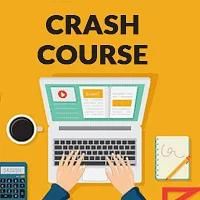CAT Exam > CAT Questions > What would be the sum of all the numbers whic...
Start Learning for Free
What would be the sum of all the numbers which can be formed by using the digits 1, 3, 5, 7 all at a time and which have no digits repeated?
?
?
Most Upvoted Answer
What would be the sum of all the numbers which can be formed by using ...
Introduction:
To find the sum of all the numbers that can be formed using the digits 1, 3, 5, and 7 without any repetition, we need to analyze the possible combinations and add them up. Let's break down the problem step by step.
Step 1: Finding all possible combinations:
To form different numbers, we need to use all the given digits without repetition. This can be done by taking each digit as the first digit and combining it with the remaining three digits in a specific order.
The total number of combinations can be calculated using the formula for permutations. In this case, since we are taking all the digits at once, the formula is:
Number of combinations = 4P4 = 4!
Step 2: Identifying the combinations:
Let's list down all the combinations that can be formed using the given digits:
1. 1357
2. 1375
3. 1537
4. 1573
5. 1735
6. 1753
7. 3157
8. 3175
9. 3517
10. 3571
11. 3715
12. 3751
13. 5137
14. 5173
15. 5317
16. 5371
17. 5713
18. 5731
19. 7135
20. 7153
21. 7315
22. 7351
23. 7513
24. 7531
Step 3: Calculating the sum:
To find the sum of all these numbers, we can add them up individually. Let's calculate the sum:
Sum = 1357 + 1375 + 1537 + 1573 + 1735 + 1753 + 3157 + 3175 + 3517 + 3571 + 3715 + 3751 + 5137 + 5173 + 5317 + 5371 + 5713 + 5731 + 7135 + 7153 + 7315 + 7351 + 7513 + 7531
Sum = 54104
Conclusion:
The sum of all the numbers that can be formed using the digits 1, 3, 5, and 7 without any repetition is 54104.
To find the sum of all the numbers that can be formed using the digits 1, 3, 5, and 7 without any repetition, we need to analyze the possible combinations and add them up. Let's break down the problem step by step.
Step 1: Finding all possible combinations:
To form different numbers, we need to use all the given digits without repetition. This can be done by taking each digit as the first digit and combining it with the remaining three digits in a specific order.
The total number of combinations can be calculated using the formula for permutations. In this case, since we are taking all the digits at once, the formula is:
Number of combinations = 4P4 = 4!
Step 2: Identifying the combinations:
Let's list down all the combinations that can be formed using the given digits:
1. 1357
2. 1375
3. 1537
4. 1573
5. 1735
6. 1753
7. 3157
8. 3175
9. 3517
10. 3571
11. 3715
12. 3751
13. 5137
14. 5173
15. 5317
16. 5371
17. 5713
18. 5731
19. 7135
20. 7153
21. 7315
22. 7351
23. 7513
24. 7531
Step 3: Calculating the sum:
To find the sum of all these numbers, we can add them up individually. Let's calculate the sum:
Sum = 1357 + 1375 + 1537 + 1573 + 1735 + 1753 + 3157 + 3175 + 3517 + 3571 + 3715 + 3751 + 5137 + 5173 + 5317 + 5371 + 5713 + 5731 + 7135 + 7153 + 7315 + 7351 + 7513 + 7531
Sum = 54104
Conclusion:
The sum of all the numbers that can be formed using the digits 1, 3, 5, and 7 without any repetition is 54104.

|
Explore Courses for CAT exam
|

|
Question Description
What would be the sum of all the numbers which can be formed by using the digits 1, 3, 5, 7 all at a time and which have no digits repeated?? for CAT 2025 is part of CAT preparation. The Question and answers have been prepared according to the CAT exam syllabus. Information about What would be the sum of all the numbers which can be formed by using the digits 1, 3, 5, 7 all at a time and which have no digits repeated?? covers all topics & solutions for CAT 2025 Exam. Find important definitions, questions, meanings, examples, exercises and tests below for What would be the sum of all the numbers which can be formed by using the digits 1, 3, 5, 7 all at a time and which have no digits repeated??.
What would be the sum of all the numbers which can be formed by using the digits 1, 3, 5, 7 all at a time and which have no digits repeated?? for CAT 2025 is part of CAT preparation. The Question and answers have been prepared according to the CAT exam syllabus. Information about What would be the sum of all the numbers which can be formed by using the digits 1, 3, 5, 7 all at a time and which have no digits repeated?? covers all topics & solutions for CAT 2025 Exam. Find important definitions, questions, meanings, examples, exercises and tests below for What would be the sum of all the numbers which can be formed by using the digits 1, 3, 5, 7 all at a time and which have no digits repeated??.
Solutions for What would be the sum of all the numbers which can be formed by using the digits 1, 3, 5, 7 all at a time and which have no digits repeated?? in English & in Hindi are available as part of our courses for CAT.
Download more important topics, notes, lectures and mock test series for CAT Exam by signing up for free.
Here you can find the meaning of What would be the sum of all the numbers which can be formed by using the digits 1, 3, 5, 7 all at a time and which have no digits repeated?? defined & explained in the simplest way possible. Besides giving the explanation of
What would be the sum of all the numbers which can be formed by using the digits 1, 3, 5, 7 all at a time and which have no digits repeated??, a detailed solution for What would be the sum of all the numbers which can be formed by using the digits 1, 3, 5, 7 all at a time and which have no digits repeated?? has been provided alongside types of What would be the sum of all the numbers which can be formed by using the digits 1, 3, 5, 7 all at a time and which have no digits repeated?? theory, EduRev gives you an
ample number of questions to practice What would be the sum of all the numbers which can be formed by using the digits 1, 3, 5, 7 all at a time and which have no digits repeated?? tests, examples and also practice CAT tests.

|
Explore Courses for CAT exam
|

|
Signup for Free!
Signup to see your scores go up within 7 days! Learn & Practice with 1000+ FREE Notes, Videos & Tests.























